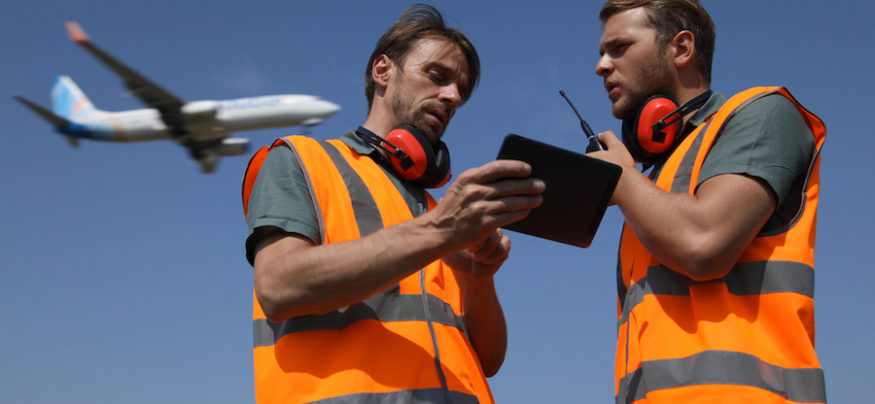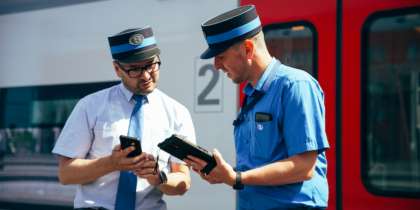Great on-time performance rewards an airline many times over. BCG found that reducing ground time by just one minute per aircraft can result in a yearly savings of up to $10 million. Staying on schedule can reduce costly cancellations and boost your reputation with customers.
For each flight that leaves the terminal, many highly trained members of your team are playing their parts in a complex and highly choreographed dance. But air travel leaves very little room for error. When problems arise, your crews have to act as quickly as possible to find solutions, while also ensuring passenger safety and comfort.
Many of you have told me you feel stuck. You’re already following best practices, hiring the best people and investing as much as you can in training and troubleshooting. Yet your OTP rates won’t rise to where you want them.
What’s clear to me is that it isn’t your employees who are holding you back — it’s your technology. There is no magic pill to fix all your technology ills, but there is one prescription that’s sure to help: Make better use of mobile technology throughout your operations. It’s affordable, and it can help you reduce your turn times right away.
Mobility Unleashes Communication and Efficiency
Most of the aviation technology terminal workers use today was built in the era of desktops and wired networks. You may have added in-flight Wi-Fi as a convenience for passengers, but airlines by and large are not taking advantage of the agility and collaboration mobility offers.
At the Gate
As any of your gate agents can tell you, slow airport computer terminals are an irritating source of inefficiency. Gate agents have to log in every time they move to a new gate, and systems can take five to seven minutes to boot up, which can contribute to flight delays.
This seemingly small inconvenience can have significant consequences. Imagine a gate agent starting their shift right after a flight delay has been announced or a late flight has landed. That agent has to hold off a long line of unhappy passengers who need gate information or ticket help for seven minutes, burning productive time while agent and passengers alike grow more agitated. This isn’t a fringe case — it happens every day.
Now imagine instead that you have assigned each gate agent a tablet with biometric sensors. They can log in as they enter the terminal and stay logged in as they move among gates, while ensuring that only they can access airline systems. One huge benefit of this mobile approach is that gate agents can now field passenger questions as they cross the airport. And if each gate is outfitted with a platform like Samsung DeX, they can also instantly link their tablet to a monitor and keyboard once they reach the gate to enable a more traditional desktop experience.
On the Ramp
Ramp agents play a critical role in on-time performance. Yet, in many cases, they still work with paper and clipboard. They communicate with each other and flight crews either via walkie-talkie or in person, which may require making trips up and down airplane stairs to give a simple status update.
[related promo]
But if you give each ramp agent a mobile device outfitted with purpose-built software, suddenly communication and consistency are dramatically improved. All your ramp personnel can now have visibility into load data for the entire ramp. Load controllers no longer have to update data manually and can focus on troubleshooting anomalies and issues. Your ramp agents can even communicate status updates to flight crews at the tap of a button.
There’s less room for human error and more efficiency at every step of the loading process. Mobile devices also reduce paper-based recordkeeping, which leads to improved accuracy and eliminates duplicate data entry.
Below the Wing
Of course, many airline delays are caused by mechanical issues, and this may be where mobility can make the biggest difference.
Airplane mechanics are some of the most highly respected tradesmen, but even they can use the help of computer diagnostics. Today’s mobile and augmented reality (AR) technologies have the power to reshape the way we train and equip airplane mechanics. Mechanics can hold up a ruggedized tablet to the part of the airplane they’re working on to view it with an AR overlay that quickly recognizes anomalies and walks the mechanic through the process of fixing them. This means mechanics can learn their trade faster and perform more reliably and effectively thanks to the “second opinion” offered by AR.
Mobile communication can also make the procuring of parts faster when it counts. Rather than mechanics having to diagnose the issue and travel to the parts warehouse, diagnosis and part retrieval can happen simultaneously by automatically communicating the needed part to a warehouse worker who can use AR to find and verify the part and bring it to the runway.
Future-Proofing Airline Performance
All of the efficiency improvements I’ve described here are just the low-hanging fruit. Every time I have met with an airline, we uncover more niche opportunities to use mobility to improve on-time performance and the customer experience.
The opportunities are only growing as mobile aviation technology matures. Samsung and our partners such as Harman have exciting visions for curb-to-curb Internet of Things (IoT) experiences that will eliminate the hassles and queues associated with air travel.
The great news is, if you start a mobility program today, it can grow and change as software evolves, for continual efficiency improvements. You can’t say the same thing about your current systems.
I challenge you to make 2019 the year your airline takes control of on-time performance by equipping your workforce with cutting-edge mobile aviation technology. Every day you cling to old systems and practices is a day you fall further behind.
Meet your passengers and employees where they are by providing the technology they know and love.







